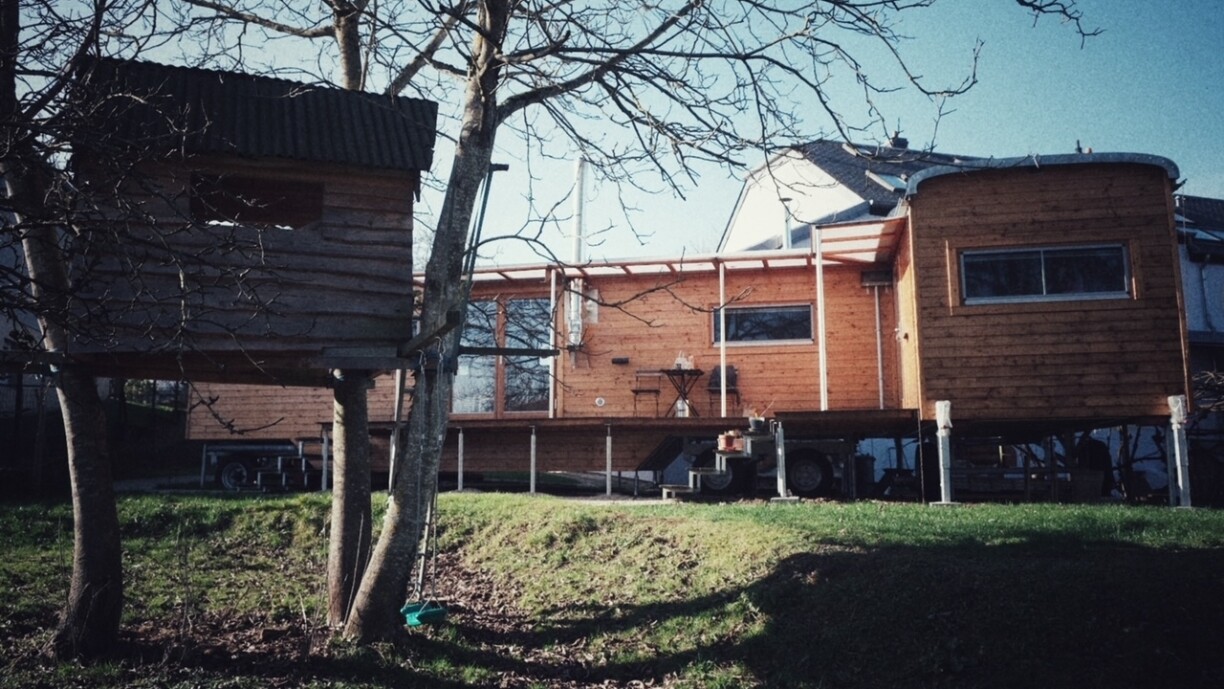
This entails adjusting the specific regulations for the general development plan (PAG), special development plan (PAP), and general building standards.
In 2022, the municipality of Strassen was the first to officially dare to look for land for this form of alternative housing. Other municipalities want to follow suit, but it is still difficult at the moment.
This regret is shared by Nickie Lippert and her partner Harry Neydeck. They are members of the Tiny House Community Luxembourg and have been living in their tiny house in Dalheim since September 2021. Their reason for moving into a tiny house was not financial, but rather ecological. Lippert explains that this new concept of living is gaining popularity for a variety of reasons.
“Two years ago, everyone was still asking us what a tiny house is. Today, people are aware of it,” Lippert says, adding that the concept has become more important in recent years.
This comes as no surprise given that housing prices have more than doubled in the last 12 years. They have climbed 140% in Luxembourg, compared to 49% on average across Europe.
“We want to be part of the community”
Members of the Tiny House Community are currently having difficulty obtaining a permanent address for their micro homes. They want to be able to register in a municipality, participate in local life, vote, and send their children to the local school. They regret that with a tiny house, you often have to settle for a campsite like a tourist.
Many municipalities are initially overwhelmed when they receive a request to integrate such a house, according to Nickie Lippert.
“Our members often experience that the municipalities show interest, but for them it is all new and they don’t know how to fully implement it,” she explains, “a tiny house does not fit into the usual regulations for flats or houses. You have to create something new with completely new dimensions.”
Tiny houses are legal in Luxembourg, however they are frequently rejected due to the PAG or building requirements. According to the building standards, the living area is too small and the house is not long or high enough. Changing an entire regulation or adapting it for a project is often too much work for small municipalities. Therefore, the Tiny House Community calls on the relevant ministry for help.
In response to rising demand, the Ministry of Home Affairs is developing three model regulations that would streamline the approval and building of tiny houses.
These new regulations are meant to serve as a basis for the municipalities to grant authorisation for tiny houses. As soon as the municipalities have drawn up the new regulations, tiny houses will also be allowed on vacant land (“Baulücken”), where they are currently excluded by more restrictive regulations. Minister for Home Affairs Taina Bofferding stresses the importance of consistency across the country, stating that it should be regulated somewhat similarly everywhere.”
She hopes that a number of municipalities will take advantage of these texts to adapt PAG, PAP, and building regulations. The Minister believes that nothing will then stand in the way of the tiny house movement in Luxembourg.
Main objective: Filling vacant lots
The idea is to build tiny houses mostly in residential areas. Several municipalities in Luxembourg are interested in this type of project, including Hesperange. Mayor Marc Lies considers it “an interesting avenue.” Once building regulations have been updated, and the owner of a vacant plot grants permission for the construction of a tiny house, Lies thinks that “everything is possible.”
Tiny Houses in Hesperange in the near future?
According to Lies, the municipal officials in Hesperange are already in the process of revising the PAG. The amendment represents a small extension of the PAG and only affects cases where the municipality is the sole or majority owner of the land. Once the modification is completed, consideration would be given to providing land for tiny houses in the context of a “new neighbourhood” PAG.
“The plots of land for such a house are not extremely large,” Lies explains, “100 to 150 square metres are usually enough.”
For the Ministry of Home Affairs, it is a matter of supporting this minimalist alternative lifestyle. The new regulations are meant to prevent abuse and exploitation of people in precarious situations.
The Tiny House Community is pleased that there is currently so much movement on the issue of alternative housing. However, questions remain as to what the three regulations actually contain. The same applies to the municipalities. With the exception of the Ministry, no one knows at present what is in store for the mayors or current or future owners of tiny houses.
The texts of the regulations are almost finished, according to the Minister, and they are expected to be finalised after a meeting with the Tiny House Community.
Full report by RTL Télé (in Luxembourgish):